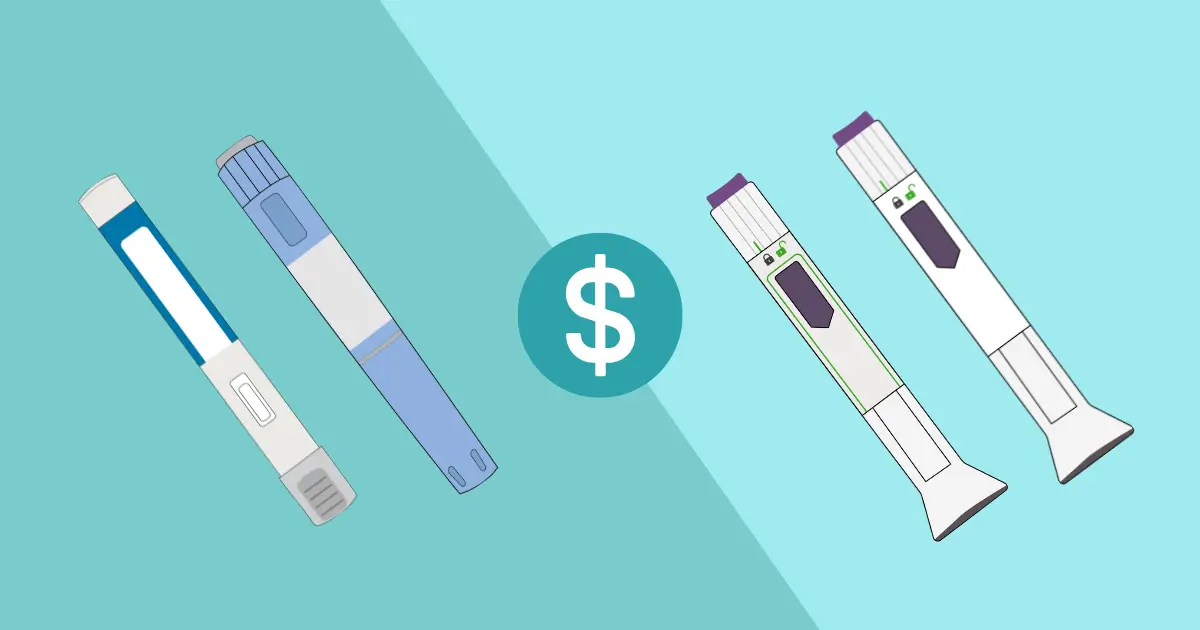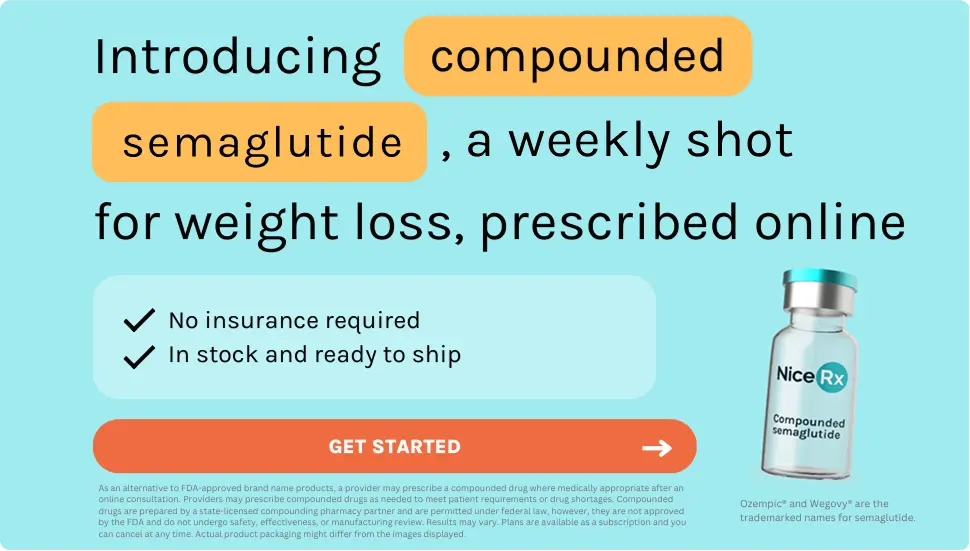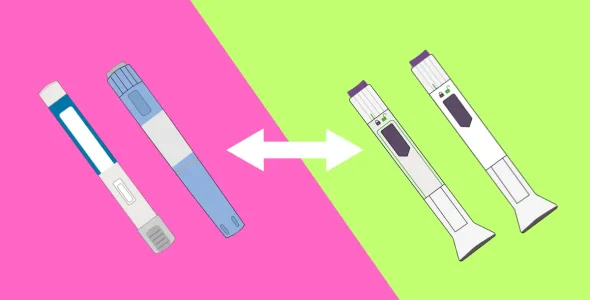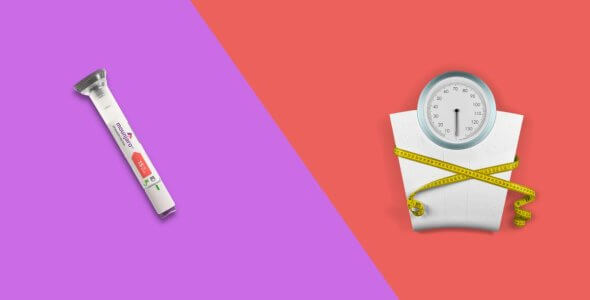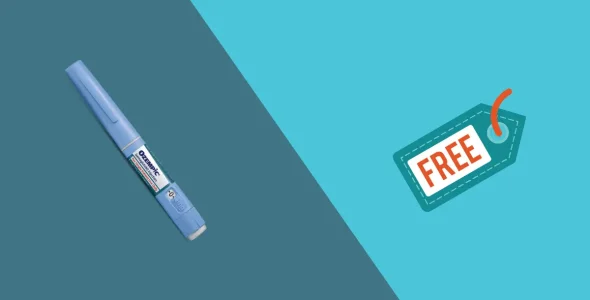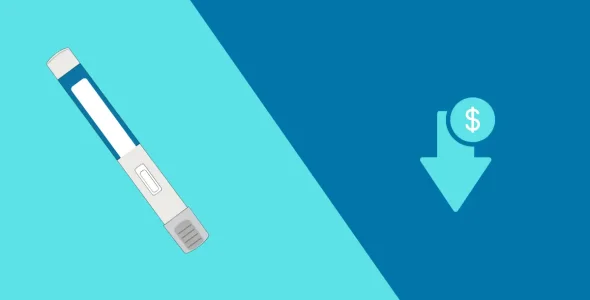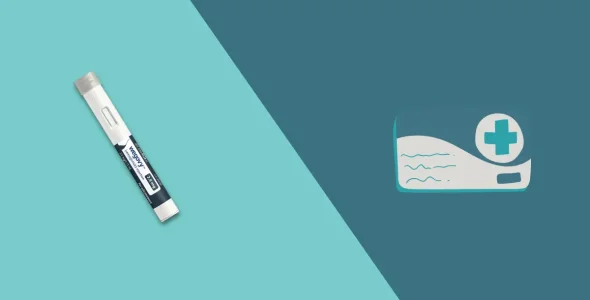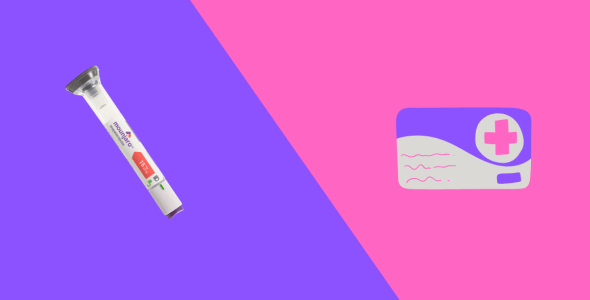How much do GLP-1 drugs cost without insurance?
You've found a medication that finally works, but then you see the price without insurance. So, what are your options?
Key highlights
- GLP-1 medications such as Ozempic, Wegovy, and Mounjaro can cost $800-$1,300 per month without insurance coverage, making them unaffordable for many patients.
- These medications are expensive due to high research costs, complex manufacturing processes, patent protection, and rising demand with limited supply.
- Manufacturer savings programs and patient assistance programs (PAPs) can help eligible patients get these medications at lower prices or even for free.
- Savings websites such as GoodRx, WellRx, SingleCare, BuzzRx, and Optum Perks help uninsured people save 9 to 27% off the retail price by using their coupons.
- Compounded GLP-1 medications are custom-made formulations available when the brand-name medication is in short supply or when the patient needs a custom dose or formulation that is not commercially available.
You’ve likely heard about the incredible results of GLP-1 (glucagon-like peptide-1) medications, such as semaglutide, liraglutide, and tirzepatide, for weight loss in obese and overweight patients and type 2 diabetes mellitus. Many celebrities have shared their successful weight loss journeys using these weight loss injections. This is why these medications are gaining widespread public attention. These medications typically cost over $1,000 per month if you’re paying out of pocket (without insurance). For many people, that’s more than their monthly rent or grocery budget.
A question may pop up in your mind: why are these medications so expensive? These medications are relatively new to the market, and generic alternatives are not yet approved. They are expensive because pharmaceutical manufacturers have spent billions of dollars on R&D to get FDA approval. Currently, most GLP-1 medications are patent-protected, which means other companies cannot manufacture them, and there are no competitors. Due to these reasons, manufacturers are charging higher prices.
This comprehensive guide explains the real costs of GLP-1 medications and also shares practical strategies to help you access and afford them even if you don’t have insurance coverage.
Understanding out-of-pocket costs for GLP-1 medications
The list price is the price of the medication recommended by the manufacturer without any insurance coverage, discounts, or savings programs. Retail price is the price at which pharmacies sell medications to patients. This is the price a patient pays when they visit a pharmacy and purchase medication without any insurance coverage or savings programs.
The price of GLP-1 medications is high because pharmaceutical companies have spent billions of dollars on research and development (R&D), clinical trials, regulatory approvals, and marketing. Moreover, peptides in GLP-1 drugs are derived from living cells through recombinant DNA technology, which makes their manufacturing process more complex and expensive than traditional pills. However, the prices vary depending on the pharmacy, dosage strength, and location.
We’ve provided the current estimated price list for the most popular GLP-1 medications. If you plan to purchase these medications directly from a pharmacy, these are the approximate out-of-pocket costs you can expect to pay without insurance. If you prefer to buy them online, it’s important to check prices at various pharmacies to confirm the exact cash price, as prices can vary depending on location and availability.
The price list of the GLP-1 medications is as follows:
GLP-1 costs without insurance
| Medication | Brand Name | Generic Name | Approximate Monthly Retail Price (USD) | FDA-approved Use |
|---|---|---|---|---|
| Ozempic | Novo Nordisk | Semaglutide (injectable) | $1,000 – $1,050 | Type 2 Diabetes, cardiovascular risk reduction, and lowering the risk of worsening kidney disease in CKD patients |
| Wegovy | Novo Nordisk | Semaglutide (injectable, higher dose) | $1,300 – $1,350 | Chronic Weight Management in obese and overweight patients , reduce risk of cardiovascular events, to treat serious liver disease (MASH) with moderate to advance fibrosis |
| Mounjaro | Eli Lilly | Tirzepatide (injectable) | $1,050 – $1,100 | Type 2 Diabetes |
| Zepbound | Eli Lilly | Tirzepatide (injectable) | $1,050 – $1,100 | Chronic Weight Management in obese and overweight patients and moderate to severe obstructive sleep apnea |
| Saxenda | Novo Nordisk | Liraglutide (injectable) | $1,350 – $1,400 | Chronic Weight Management in children aged 12 or older weighing over 60 kg, adolescents with obesity and over weight |
| Rybelsus | Novo Nordisk | Semaglutide (oral tablet) | $900 – $950 | Type 2 Diabetes |
| Trulicity | Eli Lilly | Dulaglutide (injectable) | $950 – $1,000 | Type 2 Diabetes and cardiovascular risk reduction |
Understanding list prices vs. retail prices
When purchasing GLP-1 medications, you may have come across terms like list price, net price, or out-of-pocket cost.
The list price is the official price set by the manufacturer, before any discounts, insurance coverage, or coupons are applied. For example, according to NovoCare, the list price for Wegovy is approximately $1,349.02 per month.
The net price is the cost of the medication after insurance coverage, rebates, taxes, and discounts have been applied. When the list price of a drug is announced, insurance companies and Pharmacy Benefit Managers (PBMs) step in to negotiate with the drug manufacturers. Once those discounts are applied, the final price is the net price, which is usually much lower than the list price.
Your out-of-pocket cost is the amount that you directly pay at the pharmacy counter. This cost depends on your insurance coverage (copay, coinsurance, or deductibles), the pharmacy, location, and whether you use discount coupons like those offered by GoodRx, BuzzRx, WellRx, and SingleCare.
Dose and formulation can also affect the price. Higher doses often cost more than lower doses. For example, Eli Lilly has set different prices for single-dose vials of Zepbound in different doses. For cash-paying patients, the price of a 2.5 mg dose vial is $349 per month. The prices are $499 for a 5 mg dose vial, $599 for a 7.5 mg dose vial, and $699 for a 10 mg dose vial.
Prices of GLP-1 medications vary depending on the pharmacy and location where you fill your prescription. Chain pharmacies, such as CVS or Walgreens, may charge more than independent pharmacies.
Zip codes also play a significant role in determining the price of medication. Some areas have higher rates than others.
GoodRx and SingleCare help you compare medication prices at different pharmacies. They often show discounted cash prices that can save you money even if you don’t have insurance.
Why are GLP-1 medications so expensive?
This is a common question, and the frustration of patients due to high costs is understandable. The high prices of GLP-1 medications are arbitrary. Several factors contribute to it:
- High research and development costs: These medications required years of research, clinical trials, and safety testing, which collectively cost manufacturers billions of dollars before they were approved. Consequently, manufacturers are selling these medications at high costs.
- Patent protection: GLP-1 medications are still under patent, which means there are no low-cost generic versions yet, and are only sold by the brand-name pharmaceutical company that manufactures them.
- Complex manufacturing: GLP-1 medications are made from recombinant DNA technology, which is a more complicated and expensive manufacturing process than tablets and capsules.
- High demand and limited supply: Due to their popularity for weight management and blood sugar control, the demand for these medications is extremely high. Therefore, there have been times when there wasn’t enough supply to meet the high demand, which pushes prices even higher.
How to save on GLP-1 medications
Medications like Ozempic, Wegovy, Mounjaro, Zepbound, Rybelsus, Sexenda, and Trulicity can be expensive. However, drug companies offer savings cards to help eligible patients pay less.
Manufacturer savings cards
Saving cards, also called copay cards, are the discount programs offered by the manufacturer companies. These cards can lower your monthly out-of-pocket expenses for medications, sometimes as low as $0 to $25 per month. However, there are eligibility requirements that need to be fulfilled, including:
- You must have a valid prescription from a licensed healthcare provider.
- You must be at least 18 years old.
- You must be a U.S. citizen or resident.
- Your commercial (private) insurance covers the drug. (A few programs do not require this condition.)
- You must not be enrolled in Medicare, Medicaid, TRICARE, CHAMPUS, the VA, DoD programs, Medigap, or any other federal or state-funded healthcare plan
You can find links to the savings cards for GLP-1 medications below.
GLP-1 savings card programs
| Medication | Official Savings Card Website | Typical Savings with Card |
|---|---|---|
| Ozempic | Ozempic Savings Card | Pay as little as $25/month (subject to max limits). |
| Wegovy | Wegovy Savings Card | Pay as little as $0 (up to $500 off per month). |
| Mounjaro | Mounjaro Savings Card | Pay as little as $25/month (if eligible). |
| Zepbound | Zepbound Savings Card | Pay as little as $25/month, or limited self-pay option. |
| Rybelsus | Rybelsus Savings Card | Pay as little as $10/month (if eligible). |
| Trulicity | Trulicity Savings Card | Pay as little as $25/month (subject to eligibility). |
These savings cards are not cash-paying coupons. These cards generally require commercial insurance that covers the drug and excludes individuals enrolled in government insurance programs such as Medicare and Medicaid. If your plan does not cover the medication, saving cards will typically not help. However, Zepbound and Wegovy offer a savings card for those who don’t have insurance.
Manufacturer self-pay programs
Novo Nordisk and Eli Lilly have recently introduced a reduced self-pay pricing option to help more people afford GLP-1 medication for certain drugs. For example, Novo Nordisk now offers a monthly supply of Wegovy for $499 for eligible patients through NovoCare Pharmacy. Lilly Direct has also reduced the starter dose price for Zepbound to improve access for patients. These direct-to-consumer programs offered by the manufacturers have dramatically reduced cash costs for people without insurance.
Individuals who pay cash or whose insurance plans do not cover the medication are eligible for this program. Eligibility rules vary by program. It is recommended to read the terms and conditions for eligibility on the manufacturer’s website.
Novo Nordisk Patient Assistance Program (PAP)
Drug manufacturing companies, such as Novo Nordisk, offer patient assistance programs (PAPs) to help patients who cannot afford their medications. These programs include medications such as Ozempic, Rybelsus, and Victoza (for managing blood glucose levels in type 2 diabetes), which are available at no cost or at a very low cost to eligible individuals.
The eligibility criteria of the Novo Nordisk Patient Assistant Program (PAP) in 2025:
- You must have a valid prescription from a certified healthcare professional for an FDA-approved indication. (It can not be used for off-label uses.)
- You must have legal residency or citizenship in the U.S.
- Your total household income must be at or below 400% of the Federal Poverty Level (FPL). Use the NiceRx FPL Calculator to check the current FPL. Individuals with private or commercial insurance are not eligible for this program.
- You should not be enrolled in any federal government programs, such as Medicaid, the Low-Income Subsidy, or Veterans Affairs benefits (VA).
Follow these steps to apply for the patient assistance program:
- Fill out an application form online or print it.
- Provide proof of your income (e.g, tax returns or payslips).
- Provide a valid prescription from a certified healthcare provider with their signature on the application form.
Once your application is approved, you may receive free medication shipped to your doctor’s office or a pharmacy enrolled in the program. Approval is typically valid for 12 months and may be renewed if you are still eligible.
Prescription discount cards
When you visit the pharmacy to buy GLP-1 medication without insurance, you usually pay the retail price set by the pharmacy. This price is typically higher than what insurance companies or a pharmacy benefit manager (PBM) pays.
Platforms such as GoodRx and SingleCare negotiate with manufacturers or pharmacy benefit managers (PBMs) to lower the price of GLP-1 medications. You can visit their website or app and search for the drug (for example, Ozempic or Wegovy) to compare prices at nearby pharmacies. When you present the coupon, either printed or on your phone, the pharmacy will charge the lower price according to the discount. This is how the GoodRx and SingleCare companies lower the prices of GLP-1 medications for patients who pay with cash out-of-pocket.
Consider alternatives
You can also consider older, less expensive GLP-1 medications, such as Liraglutide (Saxenda), which have generic versions, instead of the more costly ones like Ozempic, Wegovy, and Mounjaro. Here is a comparison of the list prices of GLP-1 medications.
GLP-1 list prices
| Drug (brand) | List price |
|---|---|
| Trulicity (dulaglutide) | $987.19 list price per month |
| Victoza (liraglutide) | $1,440 for 3 pens (1 month’s supply) |
| Saxenda (liraglutide, higher dose for weight loss) | $1,350 list for 30-day supply |
| Zepbound (tirzepatide) | $1,086 for 28-day supply with no insurance |
| Ozempic (semaglutide) | $997.58 per month without insurance |
| Mounjaro (tirzepatide) | $1,080 per month without insurance |
Compounded medications
Compounded medications are customized drugs prepared by licensed pharmacists or healthcare facilities according to the patient’s needs. These medications help patients meet their specific needs when no suitable commercial product is available.
Compounded GLP-1 medications have become popular due to low costs and easy accessibility. People also use compounded medications for GLP-1 microdosing. However, the use of these medications is controversial because they are not approved by the U.S. Food and Drug Administration (FDA).
As compounded medications are prepared in compounding pharmacies or FDA-approved outsourced facilities, their quality and potency may vary. Moreover, the risk of contamination is also higher. They are only used when the patient needs a personalized dose or formulation.
Compounded versions of semaglutide and tirzepatide are not FDA-approved, and their safety and effectiveness have not been approved by the FDA.
However, for patients who require compounded GLP-1 medications, it is essential to purchase them only from licensed compounding pharmacies or FDA-registered 503B outsourcing facilities. These pharmacies operate under strict federal standards, including routine inspections, quality controls, and sterile compounding requirements. In contrast, unregistered and online pharmacies may offer unsafe products that can be harmful.
Appealing insurance denials
If your insurance provider denies coverage, there is no need to worry. Ask your doctor to submit a prior authorization and provide the medical reasons why the medication is medically necessary for you. If your request is denied, file an appeal with your insurance company. Sometimes this step can lead to unexpected coverage for the medication if your doctor provides strong supporting documents regarding your health and financial status.
Frequently asked questions
What is the cheapest GLP-1 agonist?
The cheapest GLP-1 medication is Rybelsus, which is available in oral form for the treatment of type 2 diabetes. Among injectable options, liraglutide is less expensive than other GLP-1 medications, as a generic version is available. However, the prices vary based on dose, location, and insurance coverage.
Can I use a manufacturer’s coupon if I have no insurance at all?
In most cases, manufacturer coupons do not work if you have no insurance coupon. They are typically for individuals with commercial insurance. However, Wegovy and Zepbound offer a savings card for uninsured patients.
Does Medicare cover GLP-1s for weight loss?
No, Medicare generally does not cover GLP-1 medications for weight loss. Medicare Part D only covers the drugs used to treat chronic medical conditions, such as diabetes and cardiovascular diseases. Weight loss is not considered a medical necessity.
How much do GLP-1s cost without insurance?
GLP-1 medications typically cost between $800 and $1,300 per month without insurance coverage, depending on the specific drug and dose. However, some self-pay programs and manufacturer savings programs can lower the price to around $499/month for eligible individuals. Always check the official websites and discount platforms, such as GoodRx or SingleCare, for the latest pricing information.
Can I get GLP-1s for free?
Although it is less likely to get free GLP-1 medications, it is possible in certain cases. Some drug manufacturers offer patient assistance programs (PAPs) for individuals who meet specific income and insurance criteria. If you are eligible, you may be able to get free Rybelsus, Ozempic, or Trulicity.
Conclusion: Understanding the cost of GLP-1s and how to save without insurance
Without insurance, GLP-1 receptor agonists cost around $800-$1,300 per month. The high price of brand-name GLP-1 medications is one of the biggest challenges for patients seeking treatment for obesity (BMI 30 or more), overweight (BMI 27 or more), and type 2 diabetes mellitus. However, the price can be reduced to approximately $499 per month with the manufacturer’s savings programs. In some cases, eligible patients can receive the medication for free through the manufacturer’s patient assistance programs.
Several options can make these drugs more affordable. These include manufacturer savings cards, self-pay programs, and prescription discounts by pharmacies like GoodRx, BuzzRx, WellRx, Optum Perks, and SingleCare.
Always compare prices at different pharmacies, explore manufacturer self-pay options, and talk to your healthcare provider about free samples or patient assistance programs. Work closely with your healthcare provider to explore all available diabetes and weight loss medications and their respective discount programs, to find a safe, effective, and affordable path for your weight loss journey.
